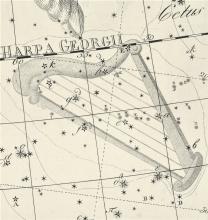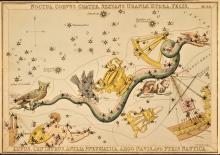Listen to today's episode of StarDate on the web the same day it airs in high-quality streaming audio without any extra ads or announcements. Choose a $8 one-month pass, or listen every day for a year for just $30.
You are here
Moon in the Middle
If you keep intending to learn a few stars and their constellations but never seem to have the time, tonight offers an easy way to check a few off the list. Several prominent stars will surround the Moon, making it easy to find the stars and their home constellations.
As twilight fades, look for two bright stars to the left of the Moon: Pollux and Castor, the twins of Gemini. Pollux is a stellar giant that’s nearing the end of its life, while Castor is a system of at least six stars.
Next, look about the same distance to the right of the Moon for bright orange Betelgeuse, which marks the shoulder of Orion. Betelgeuse is heavier than the Sun, hundreds of times wider, and tens of thousands of times brighter. Before long the star will explode, briefly shining brighter than all the other stars in the galaxy combined.
The same fate awaits most of the other bright stars of Orion, which stretch to the lower right of Betelgeuse. Three stars form a compact line known as Orion’s Belt. Rigel, Orion’s brightest star, is on the opposite side of the belt from Betelgeuse.
Canis Minor, the little dog, stands below the Moon, marked by its single bright star, Procyon. And the brightest star in all the night sky stands to the lower right of Procyon: Sirius, the leading light of Canis Major, the big dog.
That gives you four constellations in a single glance, perhaps jump-starting those plans to learn more of the geography of the night sky.
Script by Damond Benningfield





